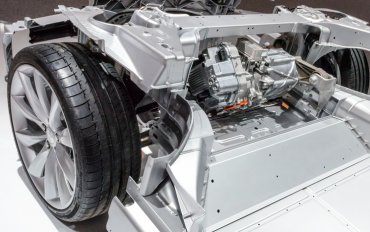Although the electrification of the global vehicle fleet has the potential to reduce lubricant consumption dramatically, it will remain limited due to different challenges, according to market research firm IHS Markit.
A fully electric Tesla Model 3 consumes only 3.6 kilograms of factory fill lubricants over a 10-year period, or 90 percent less than the well-established hybrid of Toyota Prius, and only a fraction of what Ford F-150, a full size pickup, consumes, Tatyana Stepanova, a senior analyst with the consultancy, told GBCs CIS Base Oils and Lubricants conference in late May in Moscow.
Stepanova said that the challenges in decarbonizing transportation are huge and that electric vehicles are penetrating the global market very slowly. EV sales will grow but from a very low base. According to our base case scenario, fully [electric vehicles] will account for 6 percent of global vehicle sales by 2040. While penetration of these vehicles will account for just 3 percent of the total fleet.
IHS Markit predicts that the gasoline-powered engines will account for about 70 percent of the total global fleet by 2040. The rest will be hybrid and diesel-powered vehicles (23 percent and 10 percent respectively). Only about 3 percent of vehicles will be powered by compressed natural gas, liquefied natural gas or liquefied petroleum gas by 2040, and a similar amount will have flexibility to use multiple fuels.
Hence, penetration of EVs will reduce lubricants demand, but with limited impact. We estimated that electric vehicle lubricant demand would account for 3 percent of the total global lube demand, or about 230,000 tons annually, by 2040. The rest of the demand will be covered by driveline lubricant consumption, Stepanova said.
Worldwide, 750,000 electric vehicles (including plug-in hybrids) were sold last year, and China accounted for half of that number. IHS Markit projects global electric vehicle sales will reach just shy of 3 million in 2030 and more than 7 million in 2040.
Stepanova noted that news headlines tend to overstate the extent of the vehicle electrification trend. Several countries in Europe are considering bans on internal combustion engines by 2030, although in some cases, the legislation would allow hybrid engines. Mercedes and Volkswagen plan huge investments to become electric car leaders, while half of all new cars in Norway are now electric or hybrid. Also, China is set to become an electric vehicle powerhouse and expects to see 2 million electric and plug-in vehicles roll on its roads by 2020, while car manufacturer Ford has expressed confidence that electric powered vehicles will overtake those powered on gasoline in 15 years.
Industry observers have expressed doubts about the imminent demise of the internal combustion engines and the prevalence of the electric powered vehicles over them. Chris Castanien, technical service manager at Neste America, said that countries like Russia, China, or the United States love big cars and low fuel costs. With gas prices at $2 to $3 per gallon, theres a big cost chasm for electrics to cross, he told Lube Report.
He added that lithium-ion batteries remain expensive and the infrastructure to charge them is spotty and not reliable outside the big cities.
Photo: SJO/iStock
